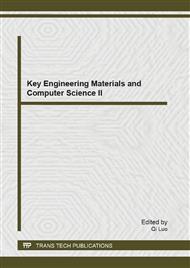[1]
DUAN Xin-sheng.Ecidential theory and decision-making.Artificial intelligence[M]. China Renmin University Press.1993.(Chinese)
Google Scholar
[2]
Shafer G. A mathematical theory of evidence [M ]. Princeton: Princeton University Press.1976.
Google Scholar
[3]
NI Guo-qiang,LIANG Hao-cheng. Dempster-Shafer evidence theory based data fusion technology. Beijing University of Technology. Vol21(5):pp.603-609,2001. (Chinese).
Google Scholar
[4]
Yager R R.On the Dempster-Shafer framework and new combination rules[J].Information Sciences.pp.83-138,1987(1).
Google Scholar
[5]
SONG Shou-peng. Submarine pipeline detection of defects reconstruction and ultrasonic echo signal processing methods[D]. Shanghai jiaotong university Ph.D. Thesis,2006,p.178. (Chinese)
Google Scholar
[6]
JIANG Qi. Pipeline defect magnetic flux leakage testing quantitative technique and its application research[D]. Tianjin university doctoral dissertation,2002,12,p.120. (Chinese)
Google Scholar
[7]
YANG Wan-hai. Multi-sensor data fusion and its application. Xidian University Press. 2004.(Chinese)
Google Scholar
[8]
HE You,WANG Guo-hong,PENG Ying-ning and so on. Multi-Sensor Information Fusion and Application. Electronic Industry Press. 2000.(Chinese)
Google Scholar
[9]
SUN Rui,SUN Shang-yuan,GE Yun-feng. D-S evidence theory based on the basic probability assignment of access. Modern machinery. pp.22-23,2006.(Chinese)
Google Scholar
[10]
GONG Yuan-ming,XIAO De-yun,WANG Jun-jie. Multi-sensor data fusion technology. Metallurgical Automation.p.158 – 161,2002.(Chinese)
Google Scholar
[11]
WANG Lian-feng, LIU Wei-dong. A new method of constructing the basic probability function and application. Vol31, pp.98-100, 2009. (Chinese)
Google Scholar
[12]
GAO Juan. Introduction to intelligent information processing methods. Machinery Industry Press. p.163 – 165,2004.(Chinese)
Google Scholar
[13]
A New Approach to Evidence Combination and its Application to Targets Recognition in Image Sequence[J]. Journal of Shanghai Jiaotong University(Science). pp.143-147,2007(2).
Google Scholar


